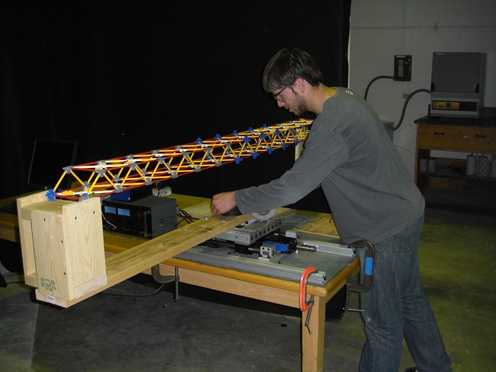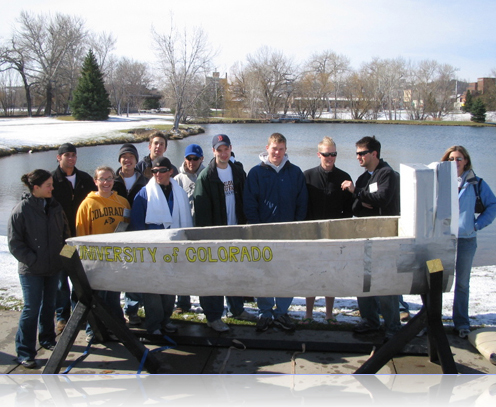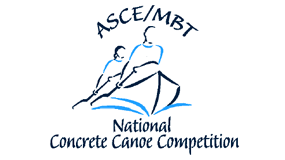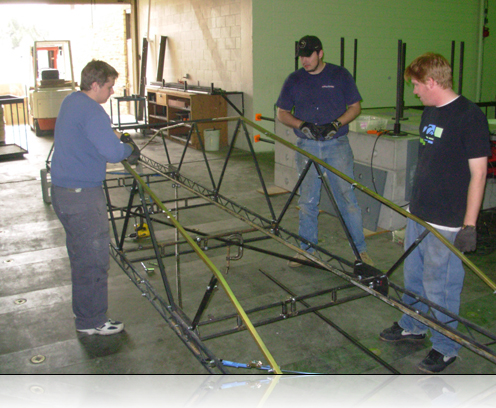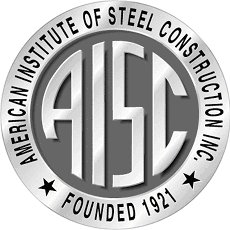 |
||
About the KNEX® Bridge ProjectE-mail Carlos at carlos.slythe@colorado.edu to be added to the KNEX Bridge e-mail list. Undergraduate Civil Engineering students are traditionally trained about the effect of static loads in structure and the design of structural members to support these loads through their curricula. The seismic analysis and design of structures is limited to advanced undergraduate classes which in most cases are not required for graduation in many schools. As a result, many students are not exposed to the effect of earthquakes loading on civil infrastructure and the difference between dynamic and static loads.
KNEX Bridge Rules 2008 The ChallengeA new bridge is to be constructed across the Ashley River in Charleston, South Carolina. The structure will be part of a new highway system to enhance the transportation network in downtown Charleston. The objective is to design the safest bridge using the least amount of material possible and constructed in the minimum time. DesignThe bridge design and model should follow the following constraints. Violation of any constrain will result in disqualification. For any clarifications about the design constraints see competition web page at http://www.ce.sc.edu/DeptInfo/Members/Faculty/caicedo/bridge_competition or contact the competition chairman at caicedo@engr.sc.edu. ApproachParticipating teams will be asked to submit a paper to the conference explaining the design and construction of their structures. The report should include a detail drawing of their design. This drawing will be used to judge if the team has deviated from their original design during construction. Papers should also include a table of structural elements and connectors, and the calculated total weight of the scaled model. The above text was originally featured in the KNEX Bridge Competition Rules posted on the Competition Website. |
||||
About the Concrete Canoe ProjectE-mail Chelsea at chelsea.billingsley@colorado.edu to be added to the concrete canoe e-mail list. Each year, schools design, build, and race full-size canoes made entirely of reinforced concrete. These canoes are judged in regional competitions (such as our ASCE Regional Conference) based on design and construction quality, written presentation of work performed, and racing performance. The "best" canoe from each region then moves on to a professionally sponsored national competition.
Concrete Canoe Rules 2008
The ChallengeSince Joseph-Louis Lambot patented his wire-reinforced concrete boats in 1847, concrete has been used for many commercial maritime products. However, for smaller, human-powered craft such as canoes and kayaks, concrete can pose many interesting and difficult structural challenges because of the smaller hull dimensions and "carved" hull shape typically needed to yield a lighter weight craft with efficient mobility. Hence the engineering challenge lies in finding lighter, stronger, concretes to be used more sparingly in efficient designs which meet both the serviceability and safety needs of people. DesignThe shape of a concrete canoe must be carefully designed so that the total weight of the canoe and its occupants will not exceed the volume of water displaced when the canoe is partially submerged to its ideal waterline. Additionally, each canoe will be required to float when completely filled with water in order to meet a state safety regulation which is imposed on canoes in general. ApproachSome schools will use "high-tech" concretes which are less dense than water in order to meet this requirement. Others will put permanent flotation material at the bow and stern of the canoe which, in conjunction with the volume of the canoe itself, will displace enough water to offset the total weight of the canoe. The above text was originally featured in an article by UCLA Alumnus Rich Shimano entitled "Those Crazy Engineers and their Concrete Canoes" |
||||
About the Steel Bridge ProjectE-mail Carlos at carlos.slythe@colorado.edu to be added to the steel bridge e-mail list. Civil Engineering students are challenged to an inter-collegiate competition that includes design, fabrication, and construction. Participating students gain practical experience in structural design, fabrication processes, construction planning, organization, and teamwork.
Steel Bridge Rules 2008
The ChallengeA century-old bridge that spans a river and adjacent floodway must be replaced. Any appropriate type of bridge will be considered but the DOT has specified steel as the material because of its durability, fast erection, and high level of recycled content. Clearance under the bridge must be provided for passage of floods. Due to environmental concerns, construction of permanent piers is permitted only on the existing footings. Initial StagesPreparation for the steel bridge competition consists of three phases: design, fabrication, and construction. The design stage generally occurs during fall semester, with some fabrication taking place around winter break. This consists of cutting, sanding, welding, and drilling the steel. Quality fabrication is vital because the actual elements of the bridge will not have the precise measurements given in the design specifications, but they must be close enough to assure that the bridge's behavior will not deviate to far from the designed expectations. Once fabrication is completed, construction practice will begin, generally towards the end of spring semester. Scoring CriteriaStandards for strength, durability, constructability, usability, functionality, and safety reflect the volumes of regulations that govern the design and construction of full-scale bridges. Criteria for excellence are represented by the award categories of stiffness, lightness, construction speed, display, efficiency and economy. The above text was distilled from the 2007 Student Steel Bridge Competition rulebook. |
